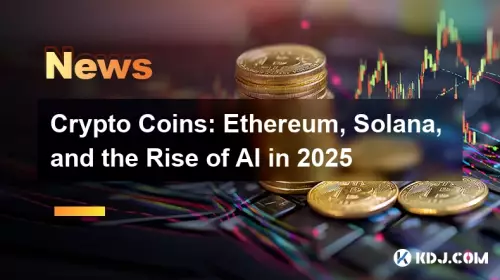 |
|
 |
|
 |
|
 |
|
 |
|
 |
|
 |
|
 |
|
 |
|
 |
|
 |
|
 |
|
 |
|
 |
|
 |
|

Author: Botanix Labs
Original link: https://botanixlabs.xyz/en/blog/the-current-occurrence-landscape-of-bitcoin-scaling
In the process of developing Botanix, we kept asking ourselves a question: Can a system built on top of Bitcoin really be called a sidechain or layer 2 (L2)? This is a complex question because from a technical point of view, based on current capabilities, Bitcoin cannot act as a true L1 to host L2 like other ecosystems. Typically, L2 relies on smart contracts deployed at the bottom layer to verify proofs. For example, in the Ethereum ecosystem, L2 verification is performed by a deterministic function in a smart contract, which is executed by all Ethereum nodes when processing transactions.
The situation with Bitcoin is both simpler and more complex. Discussions about L2 on Bitcoin are often confusing. Unlike Ethereum, which natively supports Turing completeness and expressiveness, Bitcoin's current capabilities are extremely limited, and there are subtle differences in what is technically possible and what is not. Because of this, systems built on Bitcoin do not actually have strict L2 or sidechain capabilities. So why do we prefer to call them "Bitcoin Chains" instead of extensions or L2? The reason is that these chains built on Bitcoin usually have independent operating logic and build their own ecosystems around it.
Bitcoin does not support smart contracts like Ethereum does. Any complex logic must be implemented through structures built on top of it. Therefore, Bitcoin itself cannot directly verify proofs or maintain the state of smart contracts. Most types of proofs are too large to be put on the chain - Bitcoin transactions are only allowed to carry 80 bytes of arbitrary data. Solutions like Starkware's m31 are highly specialized and closed. Even if you manage to publish some kind of proof or state update to Bitcoin, the process is more like optimistic rollups. But waiting a whole week for fraud proofs to be resolved is neither realistic nor acceptable, and relying on third-party bridges introduces delays and trust assumptions, both of which are not ideal in the Bitcoin native environment.
Interactions with Bitcoin are limited to unspent transaction outputs (UTXO) with ScriptPubKey and BTC transfer transactions. The OP_RETURN instruction can only carry 80 bytes of data and cannot support interactions with complex data structures at all. Because of these limitations, it is difficult for Bitcoin to have complete L1 support for L2 functionality unless there are major changes to the protocol (such as a hard fork). Such modifications not only require extremely high community consensus, but may also undermine the uniqueness and value positioning of Bitcoin as an asset. For example, proposals to introduce new instructions such as OP_CAT (such as CatVM) have not yet reached a broad consensus. Even if there is a consensus, it often takes several years for a BIP (Bitcoin Improvement Proposal) to be proposed and activated.
Because of this, Botanix aims to build on “current Bitcoin” rather than trying to force it to L1 or push radical protocol changes. This path is possible because we use Spiderchain technology and a network of coordinators. So, how far has the ecosystem being built on top of Bitcoin developed?
Background: The emerging landscape of Bitcoin Chain (L2)
Despite the above limitations, most projects still prefer to call themselves "L2" and use this term as a general label. One of the earliest projects to claim to be Bitcoin L2 is Stacks. Although Stacks anchors data to Bitcoin and interacts with BTC, it is essentially an independent blockchain with its own consensus mechanism. Another example is BounceBit, which is classified as Bitcoin L2 because it uses BTC in its consensus mechanism (along with the native token). But this is actually not accurate. From an architectural point of view, it is closer to a restaking model, running on its own chain, and Bitcoin's role is limited to indirect participation.
However, the vision of making Bitcoin "alive" - making it not just a value storage tool, but an asset that can "do more" - has long attracted the attention of many developers. With the new super cycle starting in 2022, this vision has become increasingly important. While Ethereum has risen about 4 times from bottom to top in this cycle, Bitcoin has risen 6 times despite being slower and more "clunky". This dynamic is very interesting, isn't it? It further strengthens Bitcoin's position as the dominant asset in the Web3 world.
From the perspective of value utilization indicators such as TVL (total value locked) - which indirectly reflects the degree of use of the underlying assets in the ecosystem - Bitcoin's comparison with other networks is even more significant. TVL represents the value carrying capacity of an ecosystem, including both the applications built on its upper layer and the utilization of the underlying assets in the L2 running on the base chain.
Currently, Bitcoin’s TVL in decentralized applications is only $5.5 billion, while its FDV (fully
免责声明:info@kdj.com
所提供的信息并非交易建议。根据本文提供的信息进行的任何投资,kdj.com不承担任何责任。加密货币具有高波动性,强烈建议您深入研究后,谨慎投资!
如您认为本网站上使用的内容侵犯了您的版权,请立即联系我们(info@kdj.com),我们将及时删除。
-

-

- TRON的稳定币帝国:跨链扩张与区块链创新
- 2025-10-21 08:00:31
- TRON 的稳定币主导地位正在通过区块链创新不断扩大。深入探讨 TRON 的跨链互操作性、稳定币趋势和区块链见解。
-

- Shiba Inu,AlphaPepe,预售:Meme 硬币的演变
- 2025-10-21 08:00:14
- 探索柴犬的动态、AlphaPepe 预售的兴起以及模因币投资的不断演变的格局。
-

- 狗狗币、鲸鱼和看涨的替代品:有什么关系?
- 2025-10-21 07:30:00
- 狗狗币的价格走势正在升温,鲸鱼们纷纷采取重大行动,而 PayDax 协议 (PDP) 等新的替代方案也越来越受到关注。这是内幕。
-

- 大谷翔平、世界职业棒球大赛和棒球热:洛杉矶恋情
- 2025-10-21 07:19:44
- 大谷十月的统治地位引发了洛杉矶世界职业棒球大赛的门票热潮。道奇队能否打破棒球卫冕冠军荒?
-

- Ethena 的扩张:新产品和团队成长即将到来
- 2025-10-21 07:15:46
- Ethena 正准备通过新产品的推出和主要团队的扩张来实现显着增长。此举标志着稳定币市场向前迈出了大胆的一步。
-

- 哥斯达黎加的招潮蟹硬币:收藏珍品!
- 2025-10-21 07:06:17
- 哥斯达黎加推出了一款新的收藏硬币,其特色是来自红树林生态系统的青蟹,为其生态系统动物群系列增添了色彩。
-

-































































